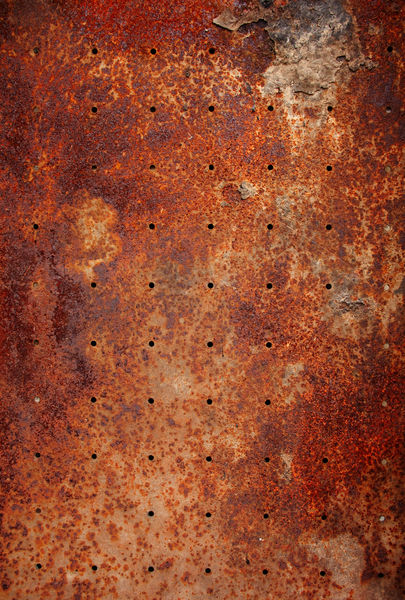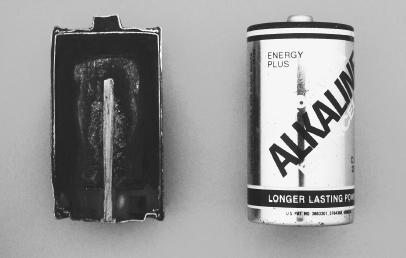Oxidation-Reduction Reactions - How it works

Chemical Reactions
A chemical reaction is a process whereby the chemical properties of a substance are changed by a rearrangement its atoms. The change produced by a chemical reaction is quite different from a purely physical change, which does not affect the fundamental properties of the substance itself. A piece of copper can be heated, melted, beaten into different shapes, and so forth, yet throughout all those changes, it remains pure copper, an element of the transition metals family.
But suppose a copper roof is exposed to the elements for many years. Copper is famous for its highly noncorrosive quality, and this, combined with its beauty, has made it a favored material for use in the roofs of imposing buildings. (Because it is relatively expensive, few middle-class people today can afford a roof entirely made of copper, but sometimes it is used as a decorative touch—for instance, over the entryway of a house.) Eventually, however, copper does begin to corrode when exposed to air for long periods of time.
Over the years, exposed copper develops a thin layer of black copper oxide, and as time passes, traces of carbon dioxide in the air contribute to the formation of greenish copper carbonate. This explains why the Statue of Liberty, covered in sheets of copper, is green, rather than having the reddish-golden hue of new, uncorroded copper.
EXTERNAL VS. INTERNAL CHANGE.
The preceding paragraphs describe two very different phenomena. The first was a physical change in which the chemical properties of a substance—copper—remained unaltered. The second, on the other hand, involved a chemical change on the surface of the copper, as copper atoms bonded with carbon and oxygen atoms in the air to form something different from copper. The difference between these two types of changes can be likened to varieties of changes in a person's life—an external change on the one hand, and a deeply rooted change on the other.
A person may move to another house, job, school, or town, yet the person remains the same. Many sayings in the English language express this fact: for instance, "Wherever you go, there you are," or "You can take the boy out of the country, but you can't take the country out of the boy." Moving is simply a physical change. On the other hand, if a person changes belief systems, overcomes old feelings (or succumbs to new ones), changes lifestyles in a profound manner, or in any other way changes his or her mind about something important—this is analogous to a chemical change. In these instances, the person, like the surface of the copper described above, has changed not merely in external properties, but in inner composition.
"LEOthe Lion Says 'GER'"
Chemical reactions are addressed in depth within the essay devoted to that subject, which discusses—among other subjects—many ways of classifying chemical reactions. These varieties of chemical reaction are not all mutually exclusive, as they relate to different aspects of the reaction. As noted in the review of various reaction types, one of the most significant is an oxidation-reduction reaction (sometimes called a redox reaction) involving the transfer of electrons.
As its name implies, an oxidation-reduction reaction is really two processes: oxidation, in which electrons are lost, and reduction, in which electrons are gained. Though these are defined separately here, they do not occur independently; hence the larger reaction of which each is a part is called an oxidation-reduction reaction. In order to keep the two straight, chemistry teachers long ago developed a useful, if nonsensical, mnemonic device: "LEO the lion says 'GER'." LEO stands for "Loss of Electrons, Oxidation," and "GER" means "Gain of Electrons, Reduction."
Many, though not all, oxidation-reduction reactions involve oxygen. Oxygen combines readily with other elements, and in so doing, it tends to grab electrons from those other elements' atoms. As a result, the oxygen atom becomes an ion (an atom with an electric charge)—specifically, an anion, or negatively charged ion.
In interacting with another element, oxygen becomes reduced, while the other element is oxidized to become a cation, or a positively charged ion. This, too, is easy to remember: oxygen itself, obviously, cannot be oxidized, so it must be the one being reduced. But since not all oxidation-reduction reactions involve oxygen, perhaps the following is a better way to remember it. Electrons are negatively charged, and the element that takes them on in an oxidation-reduction reaction is reduced—just as a person who thinks negative thoughts are "reduced" if those negative thoughts overcome positive ones.
Oxidation Numbers
An oxidation number (sometimes called an oxidation state) is a whole-number integer assigned to each atom in an oxidation-reduction reaction. This makes it easier to keep track of the electrons involved, and to observe the ways in which they change positions. Here are some rules for determining oxidation number.
- 1. The oxidation number for an atom of an element not combined with other elements in a compound is always zero.
- 2. For an ion of any element, the oxidation number is the same as its charge. Thus a sodium ion, which has a charge of +1 and is designated symbolically as Na + , has an oxidation number of +1.
- 3. Certain elements or families form ions in predictable ways:
- a. Alkali metals, such as sodium, always form a +1 ion; oxidation number = +1.
- b. Alkaline earth metals, such as magnesium, always form a +2 ion; oxidation number = +2.
- c. Halogens, such as fluorine, form −1 ions; oxidation number = −1.
- d. Other elements have predictable ways to form ions; but some, such as nitrogen, can have numerous oxidation numbers.
- 4. The oxidation number for oxygen is −2 for most compounds involving covalent bonds.
- 5. When hydrogen is involved in covalent bonds with nonmetals, its oxidation number is +1.
-
6. In binary compounds (compounds with two elements), the element
having greater electronegativity is assigned a negative oxidation
number that is the same as its chargewhen it appears as an anion in
ionic compounds.
 B ATTERIES USE OXIDATION-REDUCTION REACTIONS TO PRODUCE ELECTRICAL CURRENT .(Lester V. Bergman/Corbis. Reproduced by permission.)
B ATTERIES USE OXIDATION-REDUCTION REACTIONS TO PRODUCE ELECTRICAL CURRENT .(Lester V. Bergman/Corbis. Reproduced by permission.) - 7. When a compound is electrically neutral, the sum of its elements' oxidation states is zero.
- 8. In an ionic chemical species, the sum of the oxidation states for its constituent elements must equal the overall charge.
These rules will not be discussed here; rather, they are presented to show some of the complexities involved in analyzing an oxidation-reduction reaction from a structural stand-pont—that is, in terms of the atomic or molecular reactions. For the most part, we will be observing oxidation-reductions phenomenologically, or in terms of their outward effects. A good chemistry textbook should provide a more detailed review of these rules, along with a table showing oxidation numbers of elements and binary compounds.
Oxidation-reduction reactions are easier to understand if they are studied as though they were two half-reactions. Half the reaction involves what happens to the substances and electrons in the oxidizing portion, while the other half-reaction indicates the activities of substances and electrons in the reduction portion.
Comment about this article, ask questions, or add new information about this topic: